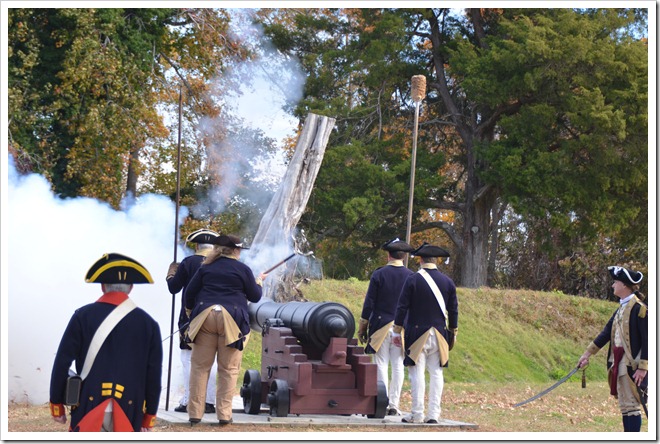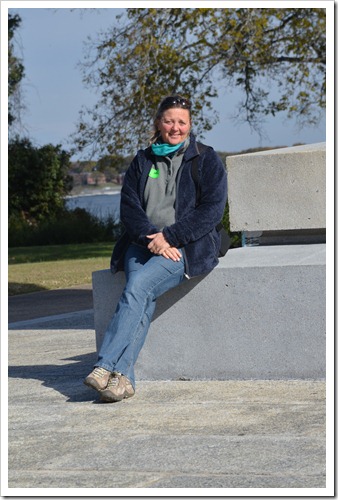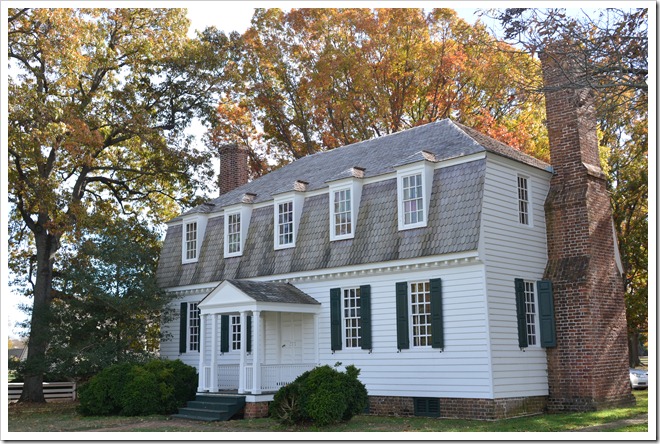The colonial sites in The Historical Triangle - No 2 Yorktown & Jamestown 12-17th Nov 2011

Nimue
Fri 18 Nov 2011 18:12
|
Following our fun day out at Williamsburg, it was time to get
into some American history – all 200+ years of it! The following day we
made an early start to complete the remaining towns in Virginia’s Historic
Triangle; namely Yorktown and Jamestown. We took the 23 mile scenic byway, known
as the Colonial Parkway providing spectacular views of the James and York
Rivers, but provided endless corridors of autumnal colour, as we travelled along
the tree lined Parkway.
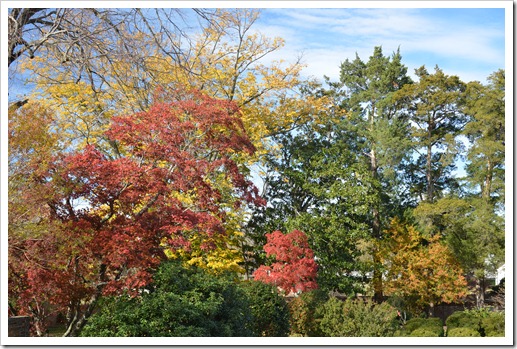 What a range of
colours!
Historic Yorktown is most remembered as the site where George
Cornwallis surrendered to General George Washington in 1781, bringing an end to
the last major battle of the American Revolutionary War, securing independence
for the United States and significantly changed the course of world
history. Yorktown also played a prominent role in the
American Civil war and was the site of the major siege operations during the
Peninsula Campaign of 1862
We arrived at the Yorktown visitor centre expecting to pay the
usual entrance fees, but to our surprise we didn’t have to pay anything, as we
happen to arrive on Veterans Day when entrance fees are waived. After a quick
tour around the centre, where events of the siege and the story of the Town of
York are exhibited, we followed a ‘lady’ official guide outside to watch the
‘re-enactment ’ firing of the cannons (British and US). The ‘lady’ ranger and
guide did an excellent job and I was quite amazed how she managed to convey her
voice in the very blustery conditions to give a very comprehensive historic
commentary to the 30 or so visitors present.
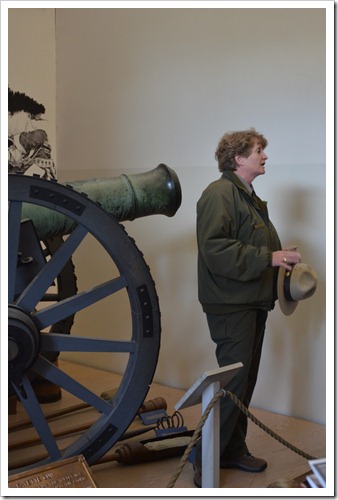  Quiet inside, but oh boy this lady
ranger had quite a voice as she conveyed what was happening during this
re-enactment
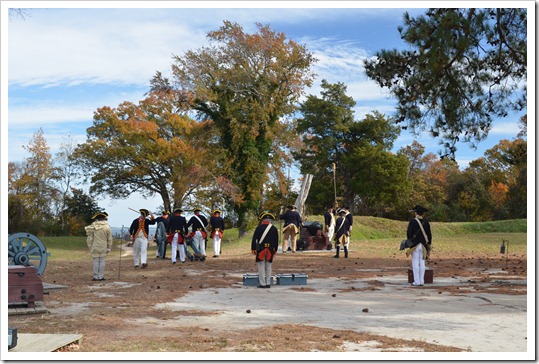 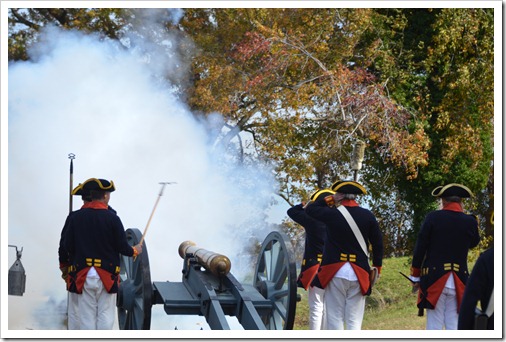 The British soldiers had small portable
cannons, which were very good for manoeuvrability, but were limited in range and
so could not reach
the surrounding American
armies.
The American/French had siege cannons which meant they could hit the English Army and one of the major factors to the English surrender Although quite chilly, we had a good walk around Yorktown, which has a unique blend of past and present, with historic homes turned into quaint shops. The French were very much evident in assisting the Americans to gain independence! Yorktown Victory Monument - At York on 19
October 1781, after a siege of 19 days by nearly 17,000
combined American and French troops; Earl Cornwallis commander of the British
Forces at York and Gloucester surrendered his 8,300 garrison
to George Washington commander in chief to the combined forces of America and
France.
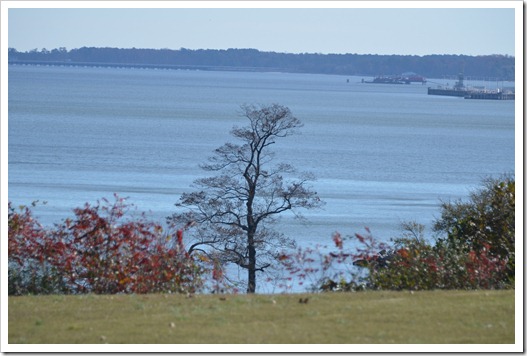 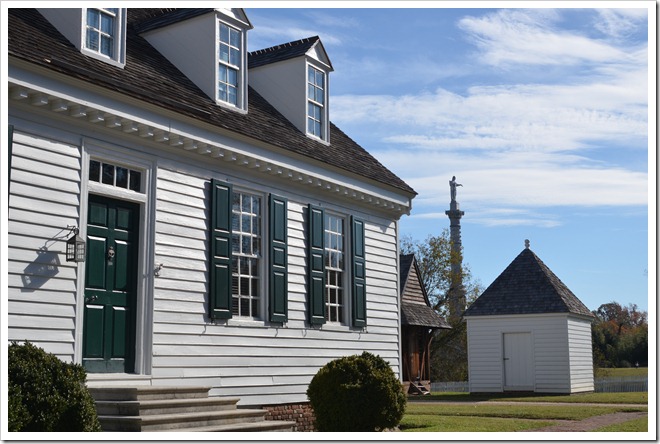 Overlooking the York River and a typical
house in Yorktown
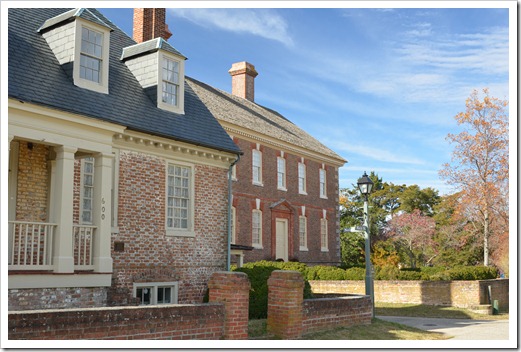 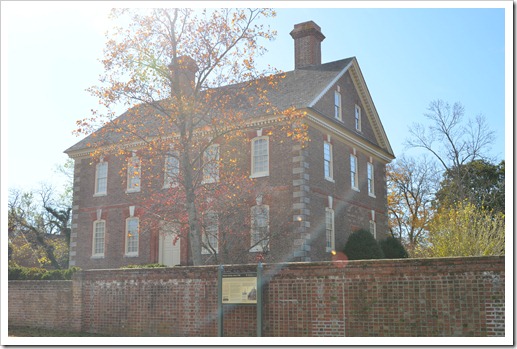 Nelson House, home of Thomas Nelson Jr.,
a signer of the Declaration of Independence
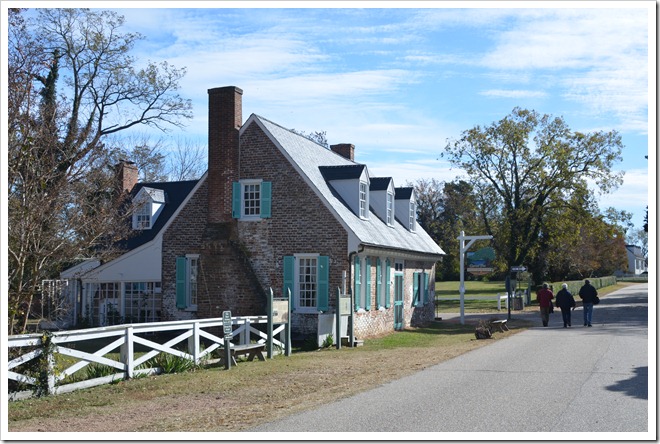 The usual 3 suspects walking down Main
St. and we stopped at the Carrot Tree Restaurant in the picture for
lunch
Moore House – site of the surrender negotiations ending the siege By following designated tour routes, we were able to take a
self guided drive tour around 7 miles of battlefields along American and French
siege lines and a further 9 mile drive took us through the American and French
encampment areas.
We drove back along the colonial highway to Jamestown,
arriving near closing time, but nevertheless managed to take a quick walk to the
‘Old Towne’. Then back to the visitor centre theatre, where we watched a
very interesting 15 minute film recounting the story of the English settlement
in Jamestown. The colony of Jamestown was established in 1607 when vessels
carrying 104 colonists anchored in the James River. Overcoming disease,
starvation and attacks by the indigenous Powhatan tribes, the colony grew and
Jamestown developed from a small commercial outpost to a large colonial port and
administrative centre and was an early step in the greatest migration in modern
history. Over the next 300 years, tens of millions of European, African
and Asian peoples arrived on American shores to begin new lives.
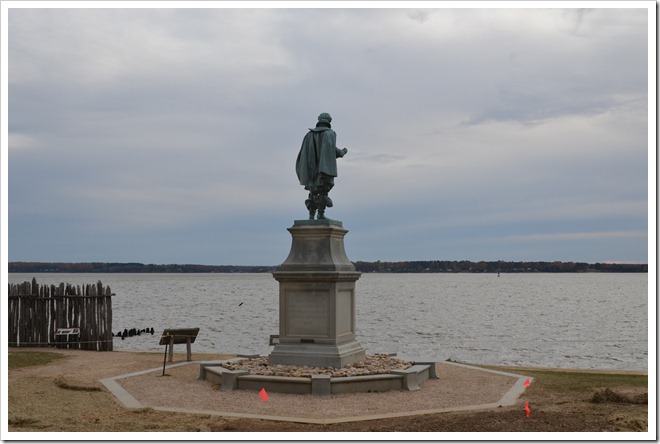 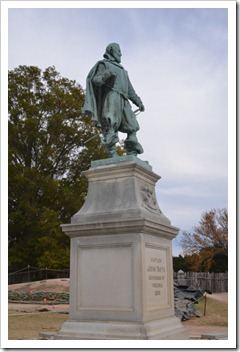 A statue of Capt. John Smith, leader of
the Virginia Colony based at Jamestown. He was the first English explorer to map
the Chesapeake Bay area and New England.
After a long, but very interesting day, we dropped off the
hire car and Enterprise kindly took us all back to ‘the girls’ (Nimue and Scott
Free). |
